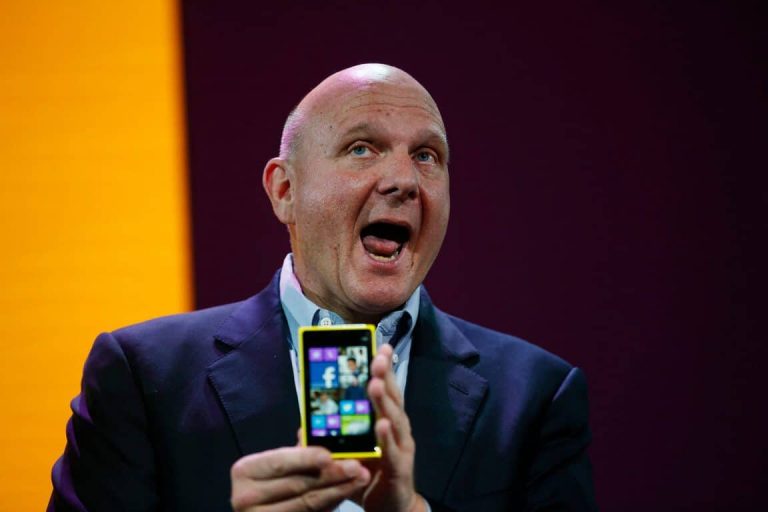Microsoft has moved into the final stages of getting rid of its smartphone business, which has been dying rapidly over the past few years.
The feature phone business, which is largely made up of cheaper handsets, will be sold to a subsidiary of Foxconn for $350 million along with the transfer of 4,500 employees. This deal, announced earlier this week, marks the removal of the last remnant of a massive failure in Microsoft’s history. Over the past two quarters, Lumia handset sales fell by 46% and then 49% to around 2.3 million units per quarter.
While Microsoft may say that it’s “fully committed” to Windows phones, selling off the handset business shows that, in reality, the company is anything but.
And this, while sad, remains a good thing. The business does not really align with Microsoft’s current priorities — spreading productivity software to all platforms — and was unlikely to pick up as Apple and Samsung, which uses Google’s Android operating system, took over the smartphone market.
The deal for Nokia cost Microsoft $7.2 billion and was one of the last things outgoing CEO Steve Ballmer did before handing over the reins to Satya Nadella. Since then, over 10,000 Microsoft employees were laid off, not including the 4,500 who will transition to Foxconn over the coming months.
The acquisition came at a time when Nokia needed saving, but it remains unclear if it was in Microsoft’s best interests to do it, especially as the secular trends in the smartphone industry indicated that there was no real space for a third player beyond iOS or Android. Indeed, the deal made no sense from the start. Fear of losing Nokia as a hardware manufacturer drove the mistake, which would cost Microsoft around $10 billion over the course of a few years, and the company still only has a 2% share of the smartphone market.
There are, of course, still some areas in smarpthones where Microsoft could dominate, such as high-end enterprise, but the path still remains unclear, especially as Apple partners with more and more companies to compensate for the original shortcomings in software security and availability.
It still remains a fact that the feature phone business was the only bright spot for Microsoft’s phone ambitions, but only because Nokia was an already-established entity that people were still buying at the low-end. Selling that off, however, shows that Microsoft is no longer committed to making phones to any degree, especially low margin ones, and the company’s efforts will be focused elsewhere.
From that perspective, the deal to get rid of the feature phone business makes a lot of sense and it should be a point of praise that Microsoft did it. I think it’s most likely down to Satya Nadella making the big, bold choices that have so far been good for Microsoft.
Windows 10 represents a big change for the company and there are still questions that remain about whether the one billion device goal can be reached over the next few years, especially as the free upgrade promotion ends in July. Smartphones are a part of Windows 10, but it’s clear that the main areas Microsoft is focusing on are tablets, specifically 2-in-1s, gaming (through Xbox), HoloLens, IoT, and the traditional PC.
The smartphone industry is now dominated by Apple and Samsung (along with some smaller regional players in Asia) and that leaves very little space for a third-party option, even if it is backed by one of the biggest technology companies in the world. Going forward, Microsoft will most likely choose to focus on Windows 10 and the remaining high-end Lumia phones, like the 950 series, that can then be sold to enterprise customers rather than the public. This strategy, as I have argued before, is essentially the only scenario when the deal for Nokia wouldn’t be a waste, although it remains bad value.
The Surface Phone could also exist and play into the hardware that Microsoft has made a success of, even as Apple dominates tablets. The future could well be unclear after Intel cancelled a low-power CPU that was ideal for the handset, but Microsoft could still work around it.
Ultimately, the move to unload the feature phone business is a win for Microsoft — beyond the $350 million — because it marks the end of an era which was dominated by a failed acquisition that haemorrhaged money and produced no worthwhile results, beyond a nifty feature on Windows 10.


